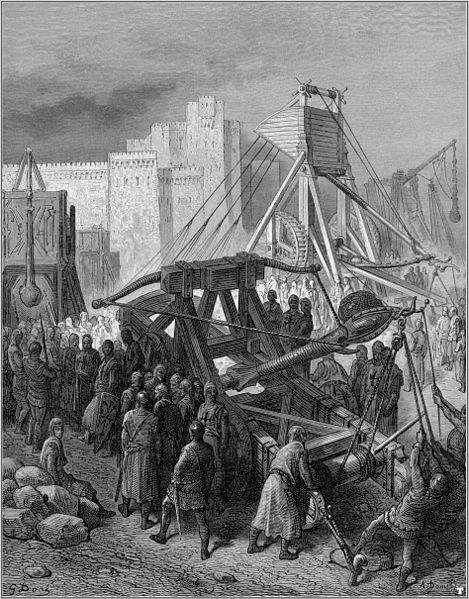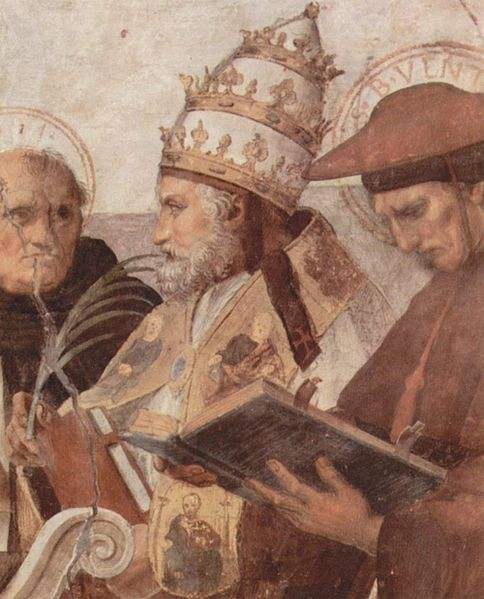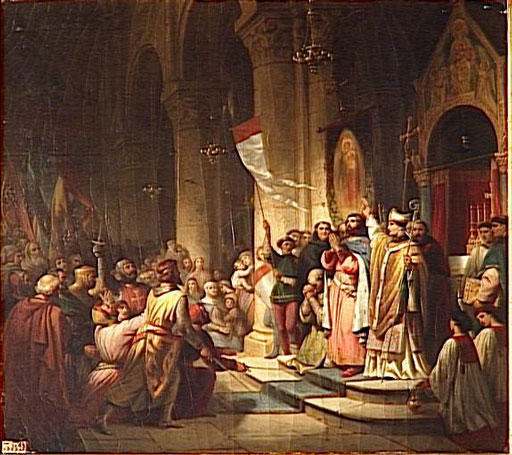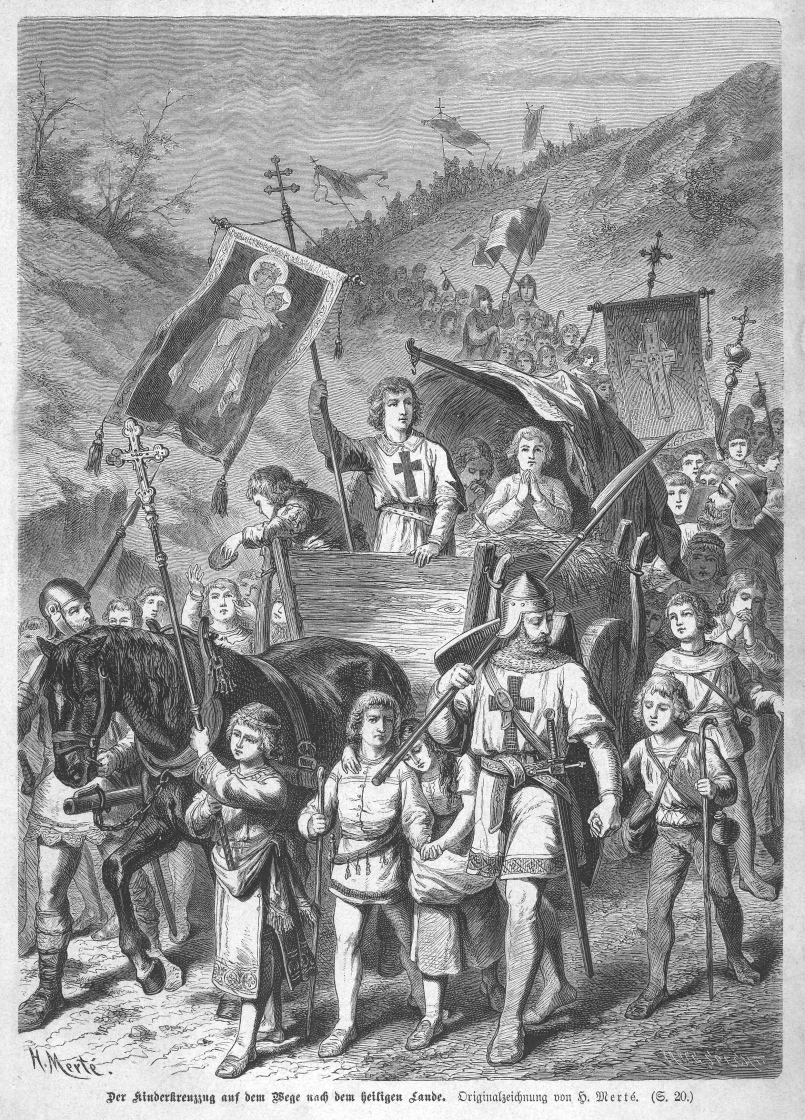II. Foundation of Christian states in the East;
III. First destruction of the Christian states (1144-87);
IV. Attempts to restore the Christian states and the crusade against Saint-Jean d’Acre (1192-98);
V. THE CRUSADE AGAINST CONSTANTINOPLE (1204)
In the many attempts made to establish the Christian states the efforts of the crusaders had been directed solely toward the object for which the Holy War had been instituted; the crusade against Constantinople shows the first deviation from the original purpose. For those who strove to gain their ends by taking the direction of the crusades out of the pope’s hands, this new movement was, of course, a triumph, but for Christendom it was a source of perplexity. Scarcely had Innocent III been elected pope, in January, 1198, when he inaugurated a policy in the East which he was to follow throughout his pontificate. He subordinated all else to the recapture of Jerusalem and the reconquest of the Holy Land. In his first Encyclicals he summoned all Christians to join the crusade and even negotiated with Alexius III, the Byzantine emperor, trying to persuade him to re-enter the Roman communion and use his troops for the liberation of Palestine. Peter of Capua, the papal legate, brought about a truce between Philip Augustus and Richard Coeur de Lion, January, 1199, and popular preachers, among others the parish priest Foulques of Neuilly, attracted large crowds. During a tournament at Ecry-sur-Aisne, 28 November, 1199, Count Thibaud de Champagne and a great many knights took the cross; in southern Germany, Martin, Abbot of Pairis, near Colmar, won many to the crusade.
It would seem, however, that, from the outset, the pope lost control of this enterprise. Without even consulting Innocent III, the French knights, who had elected Thibaud de Champagne as their leader, decided to attack the Mohammedans in Egypt and in March, 1201, concluded with the Republic of Venice a contract for the transportation of troops on the Mediterranean. On the death of Thibaud the crusaders chose as his successor Boniface, Marquis of Montferrat, and cousin of Philip of Swabia, then in open conflict with the pope. Just at this time the son of Isaac Angelus, the dethroned Emperor of Constantinople, sought refuge in the West and asked Innocent III and his own brother-in-law, Philip of Swabia, to reinstate him on the imperial throne. The question has been raised whether it was pre-arranged between Philip and Boniface of Montferrat to turn the crusade towards Constantinople, and a passage in the “Gesta Innocentii” (83, in P. L., CCXIV, CXXXII) indicates that the idea was not new to Boniface of Montferrat when, in the spring of 1202, he made it known to the pope.
 Meanwhile the crusaders assembled at Venice could not pay the amount called for by their contract, so, by way of exchange, the Venetians suggested that they help recover the city of Zara in Dalmatia. The knights accepted the proposal, and, after a few days’ siege, the city capitulated, November, 1202. But it was in vain that Innocent III urged the crusaders to set out for Palestine. Having obtained absolution for the capture of Zara, and despite the opposition of Simon of Montfort and a part of the army, on 24 May, 1203, the leaders ordered a march on Constantinople. They had concluded with Alexius, the Byzantine pretender, a treaty whereby he promised to have the Greeks return to the Roman communion, give the crusaders 200,000 marks, and participate in the Holy War. On 23 June the crusaders’ fleet appeared before Constantinople; on 7 July they took possession of a suburb of Galata and forced their way into the Golden Horn; on 17 July they simultaneously attacked the sea walls and land walls of the Blachernæ. The troops of Alexius III made an unsuccessful sally, and the usurper fled, whereupon Isaac Angelus was released from prison and permitted to share the imperial dignity with his son, Alexius IV. But even had the latter been sincere he would have been powerless to keep the promises made to the crusaders. After some months of tedious waiting, those of their number cantoned at Galata lost patience with the Greeks, who not only refused to live up to their agreement, but likewise treated them with open hostility.
Meanwhile the crusaders assembled at Venice could not pay the amount called for by their contract, so, by way of exchange, the Venetians suggested that they help recover the city of Zara in Dalmatia. The knights accepted the proposal, and, after a few days’ siege, the city capitulated, November, 1202. But it was in vain that Innocent III urged the crusaders to set out for Palestine. Having obtained absolution for the capture of Zara, and despite the opposition of Simon of Montfort and a part of the army, on 24 May, 1203, the leaders ordered a march on Constantinople. They had concluded with Alexius, the Byzantine pretender, a treaty whereby he promised to have the Greeks return to the Roman communion, give the crusaders 200,000 marks, and participate in the Holy War. On 23 June the crusaders’ fleet appeared before Constantinople; on 7 July they took possession of a suburb of Galata and forced their way into the Golden Horn; on 17 July they simultaneously attacked the sea walls and land walls of the Blachernæ. The troops of Alexius III made an unsuccessful sally, and the usurper fled, whereupon Isaac Angelus was released from prison and permitted to share the imperial dignity with his son, Alexius IV. But even had the latter been sincere he would have been powerless to keep the promises made to the crusaders. After some months of tedious waiting, those of their number cantoned at Galata lost patience with the Greeks, who not only refused to live up to their agreement, but likewise treated them with open hostility.
On 5 February, 1204, Alexius IV and Isaac Angelus were deposed by a revolution, and Alexius Murzuphla, a usurper, undertook the defence of Constantinople against the Latin crusaders who were preparing to besiege Constantinople a second time. By a treaty concluded in March, 1204, between the Venetians and the crusading chiefs, it was pre-arranged to share the spoils of the Greek Empire. On 12 April, 1204, Constantinople was carried by storm, and the next day the ruthless plundering of its churches and palaces was begun. The masterpieces of antiquity, piled up in public places and in the Hippodrome, were utterly destroyed. Clerics and knights, in their eagerness to acquire famous and priceless relics, took part in the sack of the churches. The Venetians received half the booty; the portion of each crusader was determined according to his rank of baron, knight, or bailiff, and most of the churches of the West were enriched with ornaments stripped from those of Constantinople. On 9 May, 1204, an electoral college, formed of prominent crusaders and Venetians, assembled to elect an emperor. Dandolo, Doge of Venice, refused the honour, and Boniface of Montferrat was not considered. In the end, Baldwin, Count of Flanders, was elected and solemnly crowned in St. Sophia. Constantinople and the empire were divided among the emperor, the Venetians, and the chief crusaders; the Marquis of Montferrat received Thessalonica and Macedonia, with the title of king; Henry of Flanders became Lord of Adramyttion; Louis of Blois was made Duke of Nicæa, and fiefs were bestowed upon six hundred knights. Meanwhile, the Venetians reserved to themselves the ports of Thrace, the Peloponnesus, and the islands. Thomas Morosini, a Venetian priest, was elected patriarch.

Baldwin IX, Count of Flanders is crowned Emperor of Constantinople, taking the name of Baldwin I of Constantinople.
At the news of these most extraordinary events, in which he had had no hand, Innocent III bowed as in submission to the designs of Providence and, in the interests of Christendom, determined to make the best of the new conquest. His chief aim was to suppress the Greek schism and to place the forces of the new Latin Empire at the service of the crusade. Unfortunately, the Latin Empire of Constantinople was in too precarious a condition to furnish any material support to the papal policy. The emperor was unable to impose his authority upon the barons. At Nicæa, not far from Constantinople, the former Byzantine Government gathered the remnant of its authority and its followers. Theodore Lascaris was proclaimed emperor. In Europe, Joannitsa, Tsar of the Wallachians and Bulgarians, invaded Thrace and destroyed the army of the crusaders before Adrianople, 14 April, 1205. During the battle the Emperor Baldwin fell. His brother and successor, Henry of Flanders, devoted his reign (1206-16) to interminable conflicts with the Bulgarians, the Lombards of Thessalonica, and the Greeks of Asia Minor. Nevertheless, he succeeded in strengthening the Latin conquest, forming an alliance with the Bulgarians, and establishing his authority even over the feudatories of Morea (Parliament of Ravennika, 1209); however, far from leading a crusade into Palestine, he had to solicit Western help, and was obliged to sign treaties with Theodore Lascaris and even with the Sultan of Iconium.
The Greeks were not reconciled to the Church of Rome; most of their bishops abandoned their sees and took refuge at Nicæa, leaving their churches to the Latin bishops named to replace them. Greek convents were replaced by Cistercian monasteries, commanderies of Templars and Hospitallers, and chapters of canons. With a few exceptions, however, the native population remained hostile and looked upon the Latin conquerors as foreigners. Having failed in all his attempts to induce the barons of the Latin Empire to undertake an expedition against Palestine, and understanding at last the cause of failure of the crusade in 1204, Innocent III resolved (1207) to organize a new crusade and to take no further notice of Constantinople. Circumstances, however, were unfavourable. Instead of concentrating the forces of Christendom against the Mohammedans, the pope himself disbanded them by proclaiming (1209) a crusade against the Albigenses in the south of France, and against the Almohades of Spain (1213), the pagans of Prussia, and John Lackland of England.
At the same time there occurred outbursts of mystical emotion similar to those which had preceded the first crusade. In 1212 a young shepherd of Vendôme and a youth from Cologne gathered thousands of children whom they proposed to lead to the conquest of Palestine. The movement spread through France and Italy. This “Children’s Crusade” at length reached Brindisi, where merchants sold a number of the children as slaves to the Moors, while nearly all the rest died of hunger and exhaustion. In 1213 Innocent III had a crusade preached throughout Europe and sent Cardinal Pelagius to the East to effect, if possible, the return of the Greeks to the fold of Roman unity. On 25 July, 1215, Frederick II, after his victory over Otto of Brunswick, took the cross at the tomb of Charlemagne at Aachen. On 11 November, 1215, Innocent III opened the Fourth Lateran Council with an exhortation to all the faithful to join the crusade, the departure being set for 1217. At the time of his death (1216) Pope Innocent felt that a great movement had been started.
LOUIS BRÉHIER (Catholic Encyclopedia)














